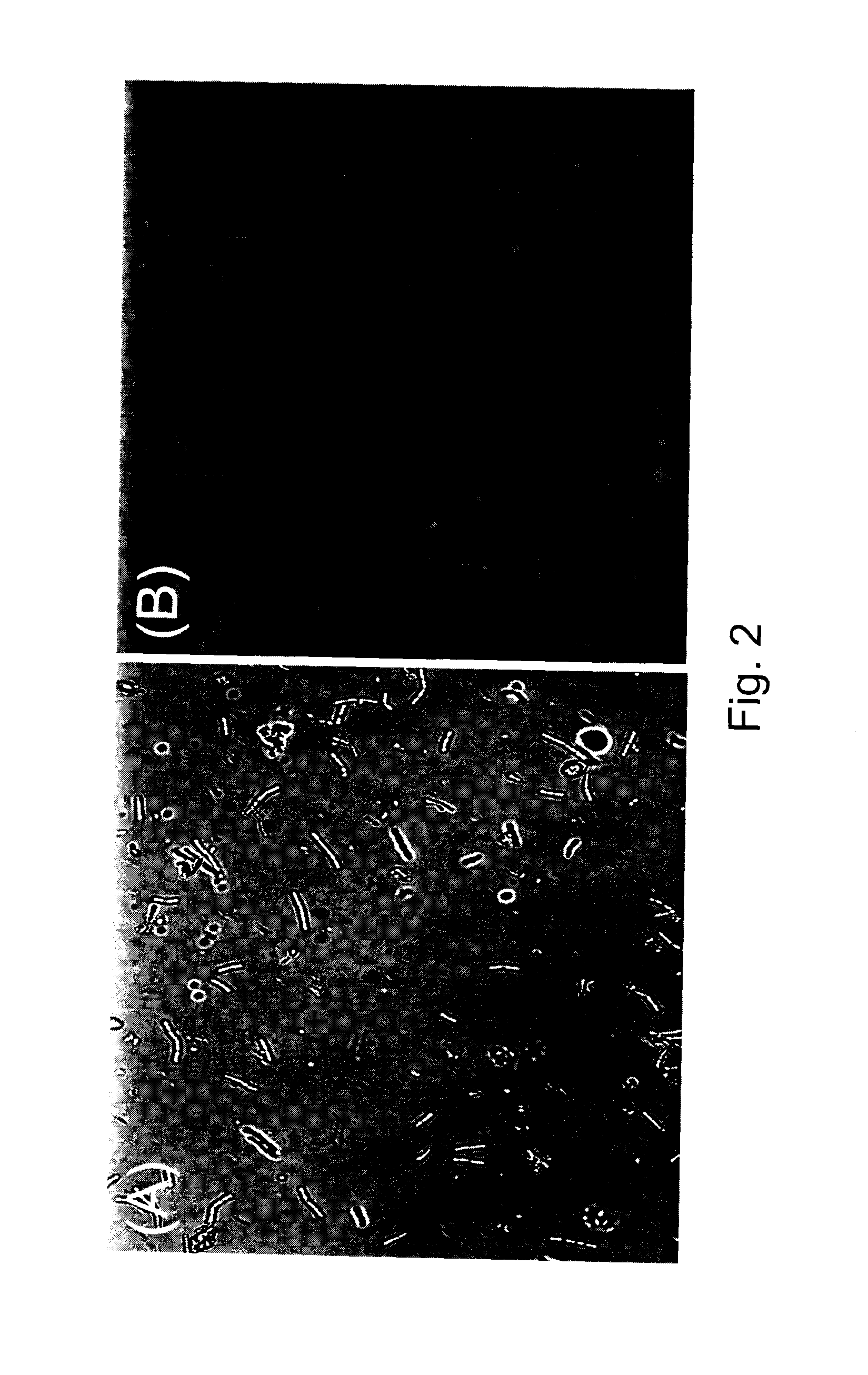Microbial production of polyhydroxyalkanoates
a technology of polyhydroxyalkanoates and microorganisms, which is applied in the field of biodegradable polyhydroxyalkanoates, can solve the problems of poor elastic properties and achieves high elongation/break ratios, low melting point, and low tensile strength
- Summary
- Abstract
- Description
- Claims
- Application Information
AI Technical Summary
Benefits of technology
Problems solved by technology
Method used
Image
Examples
example 1
Isolation and Recovery of Mcl-PHAs Producing Microorganisms from Sewage and Sludge
[0086]Sewage sludge samples were collected from the Winnipeg Wastewater Treatment Plant (Winnipeg, MB, CA). Hog barn wash samples were collected from a hog farm in Niverville, Manitoba. The samples were stored at 4° C. and were processed as soon as possible.
[0087]Fermentation by-products from a commercial grain ethanol plant (Husky Energy, Minnedosa, MB, CA) namely (i) DDGS, (ii) wet cake, and (iii) thin slurry were collected and stored at 4° C.
[0088]Three types of liquid media were prepared using the fermentation by-products as the sole carbon sources: (i) medium 1 contained 10 g / L DDGS, (ii) medium 2 contained 10 g / L wet cake, and (iii) medium 3 contained 10 g / L thin slurry. The pH of each medium was adjusted to 7.0, after which the media were autoclaved at 121° C. for 30 min.
[0089]50 mL of each type of liquid medium was inoculated with 1-mL sewage sludge sample or a 1-mL hog barn wash sample, and th...
example 2
PHAs Production by the Isolated Microbial Cultures
[0091]Six of the microbial isolates (i.e., LS1, LS5, LS33, LS34, LS39, LS46) that produced epifluorescence under UV illumination were separately cultured for 72 h in: (i) 200 mL LB broth, and (ii) 200 mL LB broth supplemented with 3 g / L glucose. The microbial cells were centrifuged at 4500 g for 20 min in a Sorvall RC6-Plus centrifuge. The microbial pellets were washed twice in 0.85% NaCl and then dried at 80° C. for 48 h. The intracellular PHA contents and PHA composition were determined by GC-MS following the method taught by Braunegg et al. (1978, Eur. J. Appl. Microbiol. Biotechnol. 6:29-37). Dried cells (20 mg) were mixed with 1 mL chloroform and 1 mL methanol containing 15% sulphuric acid. Benzoic acid (1 mg / mL) was used as an internal standard. The suspensions were refluxed at 100° C. for 4 h, after which, 0.5 ml of water were added to each suspension. The mixtures were centrifuged at 4000×g. The lower chloroform layers were s...
example 3
Cell Growth and Production of PHAs by Microbial Isolate LS46
[0094]The PHA-producing isolate LS46 was grown in LB liquid medium and in LB liquid medium supplemented with 2% glucose as the carbon source. Flasks containing liquid medium were each inoculated with a 12-h culture of LS 46. Changes in the dry weight of cells and the PHAs produced were monitored for a 48-h period. Total cell dry weights produced by strain LS46 increased in both media types during the first 24 h of incubation (FIG. 6). The presence of PHAs in both types of culture media was detected after 18 h of incubation and steadily increased for the duration of the 48-h culture period (FIG. 6). The rate of PHAs production during the 24-48 h period was greater in the LB medium supplemented with glucose when compared to the unsupplemented LB medium.
PUM
 Login to View More
Login to View More Abstract
Description
Claims
Application Information
 Login to View More
Login to View More - R&D
- Intellectual Property
- Life Sciences
- Materials
- Tech Scout
- Unparalleled Data Quality
- Higher Quality Content
- 60% Fewer Hallucinations
Browse by: Latest US Patents, China's latest patents, Technical Efficacy Thesaurus, Application Domain, Technology Topic, Popular Technical Reports.
© 2025 PatSnap. All rights reserved.Legal|Privacy policy|Modern Slavery Act Transparency Statement|Sitemap|About US| Contact US: help@patsnap.com



